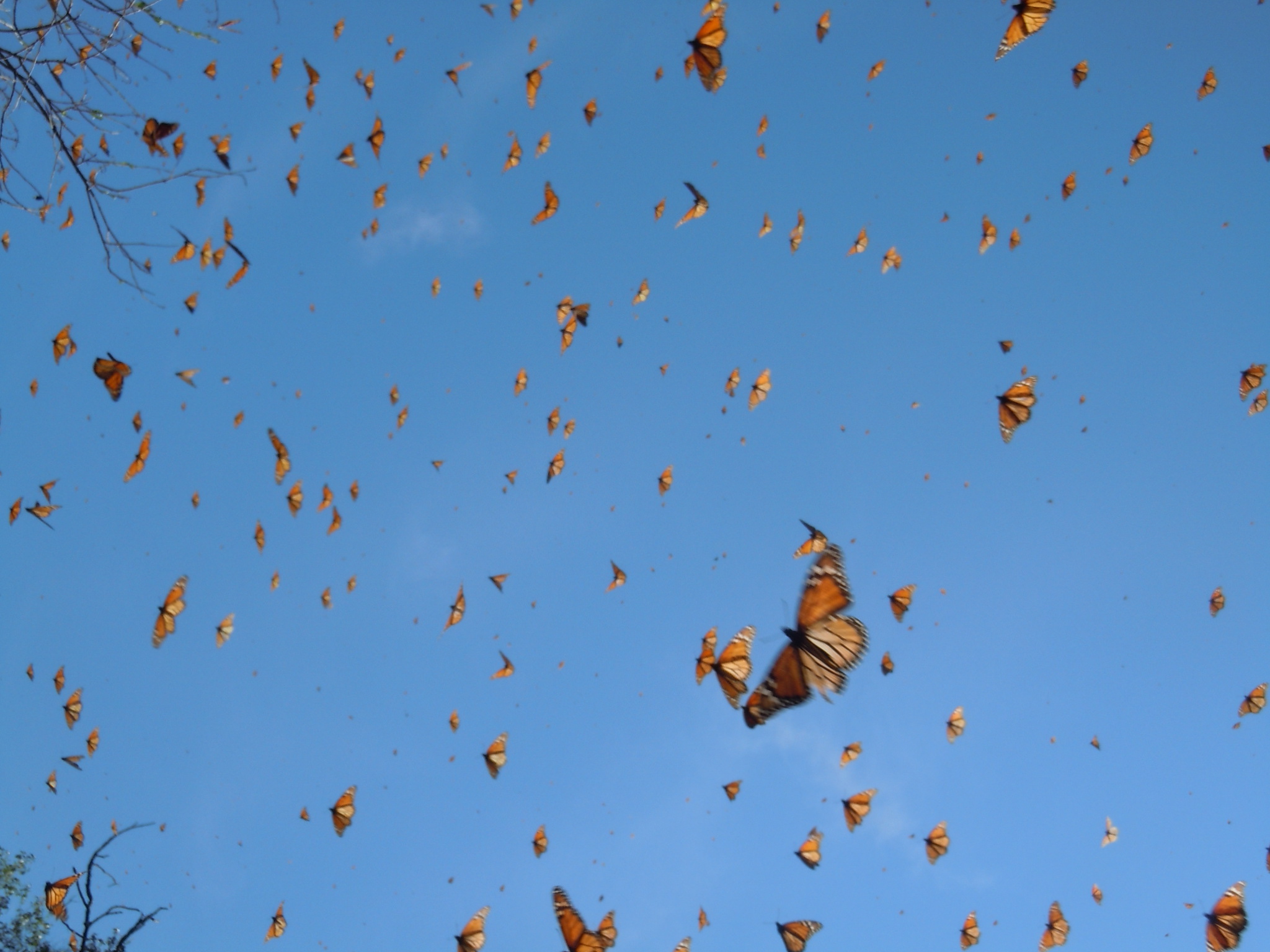Monarch butterflies seem to have taken a cue from our Wall Street protesters and moved to more friendly environs for the winter. The migrating insects, numbering in the millions, have moved slightly west in their roosting sanctuaries, from Mexico state to Michoacan, says a report in El Diario Michoacan.

Monarch butterflies in Michoacan
“It appears the butterfly now prefers the forests of Michoacan to those in Mexcio,” stated a dispatch on the website of the daily publication based in Uruapan, the municipal seat for Michoacan province.
The article quoted Oscar Contreras Contreras of the Monarch Butterfly Conservation Foundation (Funacomm) who said climate change and human activity such as illegal logging have been causing changes in the butterflies arrival and departures dates and population size for the past five years.
El Diario quoted another source who said that in the La Mesa sanctuary, in the town of San José del Rincón, the butterflies only stayed for two months “because now the conditions for their hibernation and protection no longer exist.”
The butterflies typically occupy 12 sanctuaries that straddle the mountains of the Southern Sierra Madre and Transvolcanic Belt in the Mexican states of Michoacan and Mexico. Their whereabouts change from year-to-year, and they move within and between the sanctuaries before taking flight in February and March to begin their migration north.
But this year seems different.
Monarch watchers are predicting a dreadful count, as a result of drought and wildfires in Texas, general habitat loss throughout the country and tough conditions in Mexico–environmentally and economically. The budding ecotourism industry built around the migration has been stopped in its tracks by narco violence, which has caused many tour operators to cease organizing Monarch butterfly watching tours for fears of safety. It would be no surprise that local Michoacanos might return to illegal logging as a way to feed their families and warm their homes.
We await official reports on this year’s population status, usually made available in February or March. Like the Occupy Wall Streeters here in the U.S., there’s no question the butterflies will return this spring–but in what numbers?
Like what you’re reading? Don’t miss a single post from the Texas Butterfly Ranch. Sign up for email delivery in the right navigation bar on this page, like us on Facebook, or follow us on Twitter, @butterflybeat.
habitat restoration…pass it on
Contrary to the assumption of a “dreadful count” here is a Jan. 21 Mexican newspaper article http://tinyurl.com/86gasy7 says there are about 4 hectares worth of butterfles which is about the same amount as last season. And since winter survival appears to be excellent (no major storms), Texas can expect a healthy sized arrival of monarchs from Mexico this spring. Last fall’s migration in west Texas and far west Texas was quite spectacular and I was in the town of Sonora, TX on Oct. 4 when it was engulfed with tens of thousands of monarchs that were curiously uninterested in nectaring (despite the drought) and uninterested in drinking water from lawn sprinklers. So the whole assumption that the butterflies were seriously food and water streessed last fall in west Texas may be faulty.
Paul, I hope you are right. And you were lucky to be able to witness the mass of Monarchs. What a sight.
Official reports are supposedly coming soon. We’ll see. Just to clarify, though, the article you referenced says the four hectares is LESS than last year and they are cautiously awaiting the official counts.
Keeping fingers crossed.
MM
Yes, Monika, the reference says four hectares is less than last year, yet last year four hectares is what was officially reported on Journey North: http://www.learner.org/jnorth/tm/monarch/PopulationMexicoAnalyzeGraph.html So I’m guessing maybe article’s claim of four hectares for this season is based on an early Dec. count when the colonies are typically not quite as compacted and thus occupy a slightly larger area as compared to January. Typically there are two counts per season; one in early Dec and one in mid-late January.